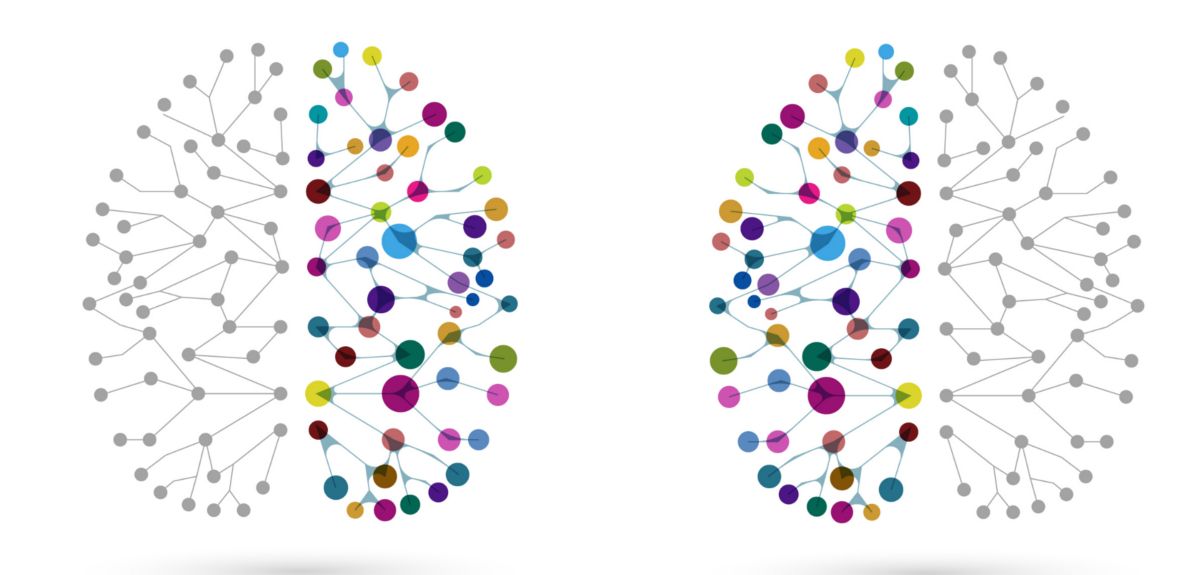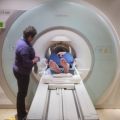
Image credit: Anita Ponne/ Shutterstock
The balance of the mind
If you're seeking to understand mental ill health, it helps to understand mental health first. This is particularly true of neuropsychiatric conditions – when problems with the structure or function of the brain underlie diagnosis. Simply put: If we know what a healthy brain looks like and how a healthy brain works, we can better understand how to diagnose and treat neuropsychiatric conditions.
We have shown that reducing cortical inhibition can unmask silent memories. This result is consistent with a balancing mechanism – the increase in excitation seen in learning and memory formation, when excitatory connections are strengthened, appears to be balanced out by a strengthening of inhibitory connections.
Dr Helen Barron, Oxford Centre for Functional MRI of the Brain (FMRIB) and MRC Brain Dynamics Unit
One key question about healthy brain function concerns the interaction between two types of cells in the brain – excitatory and inhibitory neurons. The former increase activity in a given area of the brain, while the latter decrease activity. Yet, when scientists measure the voltage – called conductance – received by a given cell, they find that excitation and inhibition are balanced, maintaining a stable state in the neuron.
Various scientists have hypothesised that when excitatory/inhibitory (E/I) balance is disrupted, this results in neuropsychiatric conditions like schizophrenia and autism. A more obvious example of such imbalance is epilepsy – where run-away excitation can be observed.
So is a healthy mind literally a well-balanced mind? And if so, how does the brain keep this balance in check?
Dr Helen Barron is a research fellow of Merton College at the University of Oxford, based jointly at the Medical Research Council Brain Dynamics Unit and the Oxford Centre for Functional MRI of the Brain (FMRIB). In a paper published this week, she and her colleagues shed light on how E/I balance is maintained in the healthy brain.
One thing to realise, she explains, is that a healthy brain is not always in a state of perfect balance. In the cortex, during learning and memory formation, connections between excitatory cells are strengthened, causing an E/I imbalance. Yet, balance must eventually be restored. Looking at theoretical work and the results of recent experiments in rodents, she hypothesised that the increase in brain activity due to strengthened excitatory connections becomes balanced out by corresponding changes in the strength of inhibitory connections. These restorative inhibitory connections can be considered inhibitory replicas of memories, and may therefore be described as 'antimemories'.
The issue now was to find a way to test the hypothesis in the human brain. One difficulty with studying the human brain is that there is no way to easily measure what is happening in individual cells. Instead, available techniques tend to give a larger-scale representation of what is happening in an area of the brain.
FMRIB, at the University of Oxford, has a powerful MRI machine with magnets of 7 Tesla strength which allowed the team to get a more detailed picture of brain activity. To put that in context – 1 Tesla is about 20,000 times the strength of Earth’s magnetic field and medical MRI scanners are usually 1.5 Tesla . Even so, to get the level of detail they wanted, Helen and her colleagues took the unusual step of combining a number of techniques with functional magnetic resonance imaging of the brain, including magnetic resonance spectroscopy, transcranial direct current stimulation and computer modelling.
Dr Barron explained the process: 'Volunteers were taught pairs of shapes. If you link shape A with shape B, we will see brain activity related to shape A followed by brain activity related to shape B. To measure these links, or associative memories, we use a technique called repetition suppression where repeated exposure to a stimulus – the shapes in this case – causes decreasing activity in the area of the brain that represents shapes. By looking at these suppression effects across different stimuli we can use this approach to identify where memories are stored.
'Over 24 hours, the shape associations in the brain became silent. That could have been because the brain was rebalanced or it could simply be that the associations were forgotten. So the following day, some of the volunteers undertook additional tests to confirm that the silencing was a consequence of rebalancing. If the memories were present but silenced by inhibitory replicas, we thought that it should be possible to re-express the memories by suppressing inhibitory activity.'
The team therefore used transcranial direct current stimulation (tDCS), where a safe, very low current is passed across the brain to modulate inhibitory activity. Magnetic resonance spectroscopy allowed them to measure the concentration of certain neurochemicals linked to excitation and inhibition, including GABA, which is linked to inhibition. If the concentration of GABA reduces, inhibitory activity also reduces. So if their theory was correct, this reduction in GABA should reduce the silencing effect of inhibitory connections upon memories.
That's exactly what happened: When tDCS was applied, memories of the shape associations were re-expressed. Notably, those volunteers who showed the greatest reduction in GABA concentration were also those with the strongest re-expression of the memory.
Helen explains: 'We have shown that reducing cortical inhibition can unmask silent memories. This result is consistent with a balancing mechanism – the increase in excitation seen in learning and memory formation, when excitatory connections are strengthened, appears to be balanced out by a strengthening of inhibitory connections. From this we can infer that memories are stored in balanced E/I cortical ensembles.'
The results are also important because they have shown how it is possible to get information about the workings of the brain at a more detailed level than previously possible.
While the human part of the study has provided a better understanding of balance in a healthy brain, there was a further piece of work that has added to the team’s conclusions.
Having a set of tools that can be translated into clinical use will enable psychiatrists to identify more easily when processes demonstrate unhealthy activity.
Dr Helen Barron, Oxford Centre for Functional MRI of the Brain (FMRIB) and MRC Brain Dynamics Unit
They worked with computational neuroscientist Dr Tim Vogels who used an artificial neural network to simulate the same processes demonstrated in the volunteers. This provided a qualitative description of the same result and was able to show how the signals observed in the human brain may arise from changes in the strength of neural connections.
Helen concludes: 'The paradigm has the potential to be translated directly into patient populations, including those suffering from schizophrenia and autism. We hope that this research can now be taken forward in collaboration with psychiatrists and patient populations so that we can develop and apply this new understanding to the diagnosis and treatment of mental disorders.'
She, meanwhile, will continue to index the healthy brain, providing the important reference points for further research into mental illness: 'I am trying to find indexes for microscopic processes in the human brain. Having a set of tools that can be translated into clinical use will enable psychiatrists to identify more easily when processes demonstrate unhealthy activity.'
 Revealing the brain's breathing secrets
Revealing the brain's breathing secrets